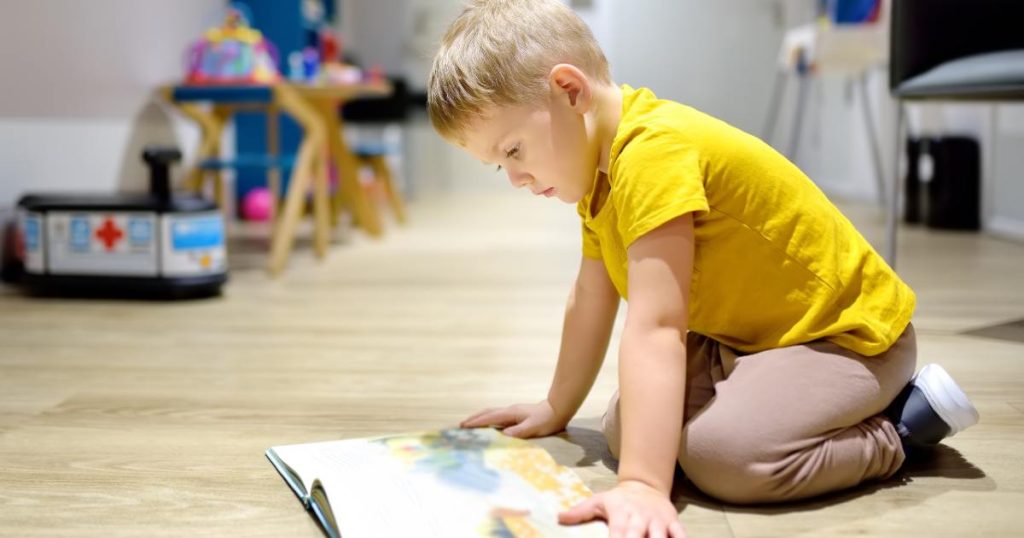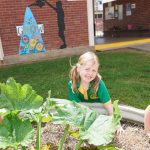With the seemingly constant focus on children’s literacy outcomes and the types of texts used in primary and secondary classrooms and libraries, a new book by the Victorian School of Education at Australian Catholic University (ACU), Associate Professor Matthew Zbaracki, aims to cut through the confusion to help teacher (and families) connect young readers with quality stories.
Children’s Literature in the Classroom takes a close look at the elements of a cracking story that inspire students to keep turning the pages – and to have robust discussions about what they discovered on those pages.
It’s a book filled with positive insights into what to look for when choosing texts to use as mentor texts and share with students, as well as solid examples across a range of genres, including picture books, poetry, non-fiction, fantasy, realistic fiction, historical fiction, Indigenous literature, digital texts, and humorous texts to suit a broad span of ages.
Children’s literature, says Associate Professor Zbaracki, continues to evolve – and it’s an evolution that brings “a lot more sophistication to the storytelling”.
“What I’ve seen evolve is the way that authors and illustrators are using image and text to work together to tell the story and to move the story forward – not just in picture books but it’s also in novels for older readers as well,” he told EducationDaily.
“When you think of things liker The 13-storey Treehouse with Andy (Griffiths) and Terry (Denton)…they’ve used the images and text to really push the story forward – and kids love it.”
In the past, Associate Professor Zbaracki says – “especially in picture books” – the image was used to “reinforce what you had just read in the text”.
“But now what happens is that the images actually tell the story in their own way…and the readers have to pay attention to both. So, it’s that sophistication – across both picture books and novels – that has really evolved to make children’s literature really great.”
There’s just a lot more creativity with that as well, he adds.
“Sometimes it’s about breaking that fourth wall. Sometimes it’s about involving the reader into the story,” he told EducationDaily.
“It could be where the reader sees something in the picture that doesn’t necessarily match up with the text and it’s meant to be that way – and they have to see that in order to properly understand the story and understand the humour in there.”

But despite the changing nature of stories today’s young readers are engaging with in the classroom and at home, Associate Professor Zbaracki believes some classic ingredients never go out of style.
“It needs to have a good story for one,” he says.
“Children need to be able to enjoy the story and appreciate the story. Also, they want to see characters that they relate to and enjoy and, in a sense, care about. Because when you have those fun characters they enjoy – like the Pig the Pug series – the success is because the character is one kids really enjoy.”
He cites the Mr Chicken character created by author and illustrator Leigh Hobbs as another example of a character that children connect with.
“Sometimes, it’s just this unexpected character that is really loved.”
Associate Professor Zbaracki says it often comes back to humour – an element he believes helps a lot in children’s literature, when done well.
“Another huge aspect is illustrations that the children enjoy,” he told EducationDaily.

Sharing Australian stories
Ensuring students have access to Australian stories is vital, Associate Professor Zbaracki says.
“Children need to be able to relate to the stories and see themselves in the story, in the characters, or at least in the setting,” he says.
“it’s a celebration of who they are and where they come from – and he ability to recognise and celebrate those identifiable, familiar cultural settings.”
Associate Professor Zbaracki says there are many good books that do it brilliantly and show children what life is like in Sydney, or Melbourne, or regional Australia by using well-known landmarks and unique qualities connected with those specific locations.
“It helps them see they’re not alone and that there are other people in the world like them – specifically in Australia, so they feel like they are part of the world, and they are not alone.”
Unique knowledge helps match stories to readers
Educators, he says, can play a powerful role in connecting children with stories by drawing on their unique knowledge of each student to help match each student with a book that matches their individual interests or circumstances.
By understanding the students’ interests, educators can recommend a book with humour, fantasy, or mystery, to suit that child – or they could find a book that features an issue that the child understands.
“There are so many books, for example, about kids starting school, or starting at a new school and having to make new friends,” Associate Professor Zbaracki says.
“By connecting a child with a book about something they’re going through – from divorce to a death in the family – that student can find themselves in the story, and enjoy thestory more”.
Presenting books about issues, he says, presents a meaningful opportunity to engage in discussion – something that adults who read books to children sometimes miss.
“Often an adult will read a book to a young person and say something like ‘wasn’t that a great story?’ without actually asking the child to share their own thoughts about the story and encourage a discussion about what that child saw in the words and the illustrations,” Associate Professor Zbaracki told EducationDaily.
“Great children’s literature should motivate great discussion.”








